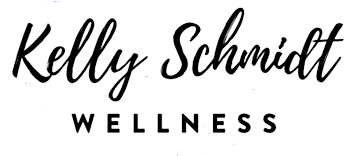I will let you decide but you can guess what my answer is.
It is an injustice that people are to rely on the government for dietary guidance when there are such politics behind the scenes. We as consumers are persuaded what to eat by commercials on TV, ads in newspapers, online, billboards driving to work and of course by cost. The government has a business to run and therefore chooses what foods to subsidized. Even worse these foods were foreign to the diets of our ancestors and now food allergies are showing up EVERYWHERE. I wonder why? Perhaps our food supply is saturated with the wrong foods and preservative.
I am very passionate about this topic because the governmental funded foods make me ill. Very ill and they sneak into everything. For example, I bought some roasted pumpkin seeds yesterday and after enjoying some I went to read what the oil was to keep the salt on the seeds. What?? Wheat! And then I got sick.
Have a read of this article I found about government funded food in the Atlantic. Every food mentioned is an allergenic food, causing inflammation. Inflammation is not a good thing. If you were to look into what inflammation does to our bodies you will find it leads to disease: diabetes, obesity, arthritis, cancer, thyroid dysfunction, kidney disease and more.
I hope this helps you understand that we cannot be sold by price but we need to consume foods that nourish us. A good book that can help paint a picture of what those such foods look like is called, “Primal Body, Primal Mind.”
The 9 Foods the U.S. Government Is Paying You to Eat
In 2009, the federal government spent $12.3 billion in payments to America’s farmers. The number was cause for celebration, and not only among the tractor and overall industries. $12.3 billion was nearly the lowest payment in the past decade, as high food prices surpassed the threshold for subsidies.
By and large, most subsidies function as a form of so-called “farm income stabilization.” The Department of Agriculture sets a price floor for a given crop. If market prices rise above that level, farms sell on the open market. If prices fall below, the government reimburses farmers the difference between the market and the floor price for every unit grown — or not.
Even as farmers profit from increased demand, the government remains a major player in the food business. While assessments of the subsidies’ quality varies — with many commentators labeling them indigestible — attempts to cut have thus far been unsuccessful.
So what is the Department of Agriculture putting on your plate? We present the top nine products that the government most heavily subsidizes.
You can find soy in almost everything. Most obvious places include vegan foods, soy sauce, and more. But would you ever think it would be in salad dressings and marinades? Rightfully so. It’s cheap! But if you were to look at the fatty acid content of soybean oil, the omega 6 fatty acid ratio is high. And that is not normal nor natural. High = bad = inflammation. Better oil options include olive oil and coconut oil. For salads I was hopeless finding something in the grocery that did not include soybean oil or sunflower oil as the main ingredient so I now use lemons and olive oil, salsa, or white wine vinegar and some herbs to flavor my vegetables.
Corn, corn flakes, tortillas, chips……sugar. Sugar and more sugar. High Fructose corn syrup (HFCS) is the sweetener and preservative in most junk foods. The average US person consumes 59.2 pounds of HFCS per year and that is easy to believe when HFCS is one of the most common preservatives in fast food restaurants. Be weary of this stuff. It is not good and I would avoid it just as much as gluten.
Beer. I cannot go too far on my thoughts of beer other than grains are becoming cheaper as is beer. If you were to compare the composition of beer today to beef back when; the composition is different.
Peanut butter. How much I used to love you. Have you ever heard that typical allergen foods are ones people most often crave? PeanutbutterandKelly has removed peanut butter from her diet. Not initially by choice but by force. Peanut butter (likely has sugar or HFCS) in it but it also have lectins and is a high pesticide food. If you choose to eat peanut butter, aim for organic and make your own.
Beef. Yes, it’s cheap and perfect for a barbecue on a budget. But is it worth it? Yes, if grass fed. Most beef is not grass fed, they are fed corn or grains. Indeed cows do not have stomach meant to digest corn and grains and this feeding practice in my opinion is torturous to the animal. And in the end it is not good for us humans. When cows are fed grains or corn, the fatty acid ratio alters to be higher in the omega 6 fat, which causes inflammation. Inflammation = bad. Read my recent post on Kangaroo verse Beef from earlier this week for more information.
Is milk not good for us? Doesn’t it do a body good? Where do I start? I will just say this, if you have an autoimmune disease avoid dairy. It is very hard, especially when you do not have any avert effects from eating it, but it is worth it. I did not believe this advice I was given until the last month where I have gone 100% dairy free. I could avoid milk easy but when it came to nice cheeses, I struggled. But I will say, my blood sugars have been remarkable without dairy and my insulin dose is down. The culprit = inflammation. Do not believe everything that is shown on TV or in ads. Do a Google search and read the many perspectives on how dairy is not all we thought it was. Choose foods that help heal and nourish your body.
Rice allergies are becoming more known, especially in those with gluten allergies. Consume and be weary of how you feel. You are the advocate of your own health. Champion it.
As mentioned above with Soy, sunflower oil is a cheap preservative in dressings and many foods. I have a hard time finding nuts (with salt) that does not have sunflower oil. This oil is high in omega 6 fatty acids, which mean can cause inflammation. Inflammation = bad.
Wheat – it has fiber, but so do many other natural, better for you foods. Choose vegetables such as carrots, sweet potatoes, brussel sprouts, etc to fill you, rather than wheat.
Cheers to you and a road to good health!











